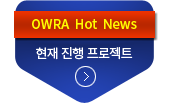[PRNewswire] Times Higher Education chooses the Web of Science to assess
innovation in research
-- Citation data and analytics from Clarivate Analytics predict what's hot in research
[편집자 주] 본고는 자료 제공사에서 제공한 것으로, 연합뉴스는 내용에 대해 어떠한 편집도 하지 않았음을 밝혀 드립니다.
(PHILADELPHIA, May 25, 2017 PRNewswire=연합뉴스) Times Higher Education's [https://www.timeshighereducation.com/ ] May 25 issue features 19 hot topics in current research that have the potential to change the world. These hot topics were identified using Web of Science [http://clarivate.com/scientific-and-academic-research/research-discovery/web-of-science/ ] citation data and Essential Science Indicators(SM) [http://clarivate.com/?product=essential-science-indicators ] insights from Clarivate Analytics.
Times Higher Education (THE) chose Web of Science citation data to gain an objective view of contemporary research for its May feature "The next big bang". The featured research includes enhancing the body's potential to kill cancer cells; development of genes driven to modify plants, animals and insects; producing clean power sources such as redox flow batteries and "green" hydrogen cars; reducing energy use by low-power LED lighting; discoveries in the environment and ecology field to improve environmental health; next-generation electronics and big physics.
Clarivate Analytics has, for five decades, been the world leader in understanding trends in research through analysis of the curated, high-quality data in Web of Science. Dr. Henry Small and the late Dr. Eugene Garfield pioneered science mapping in the 1970s and 1980s using co-citation analysis. Since then, insights gleaned through this method have informed policymakers and funders on hot or emerging topics and where they should focus their attention and resources.
"The citation network linking one paper to another reveals the organic structure and dynamics of specialty areas," notes David Pendlebury, senior citation analyst at Clarivate Analytics. "We call these specialty areas 'research fronts' because they represent active, leading-edge activity. And since citations reflect the expert judgments of researchers themselves, the citation network is a reliable guide to the true nature of current research, not a depiction employing traditional field or subject categories that lag behind what is really happening today."
Constructing research fronts starts with identifying highly cited papers (those cited in the top 1% for their age and area) over the most recent five years. It is then determined how often these papers have been jointly cited (co-citation). High co-citation frequency suggests a strong socio-cognitive association between the content of two papers. Repetitive analysis of co-citation patterns yields clusters of related research reports. These clusters, or research fronts, are provided in the Clarivate Analytics Essential Science Indicators database. About 8,000 appear every two months in Essential Science Indicators.
For THE's May feature, research fronts with the youngest co-cited papers and with at least 200 citations to date were extracted and 19 selected for special attention, reflecting their wider scientific environments and potential applications. THE editors assigned these to five broad groupings (biology and medicine, energy and light, astrophysics and high-energy physics, environment and ecology, and next generation electronics) and its journalists interviewed the key players and describe why these fronts capture what is hot in research today.
"Highly-cited papers turn out to be one of the most reliable indicators of world-class research, and can provide a map of the most innovative research," said Jessica Turner, global head of the scientific and academic research business at Clarivate Analytics. "We are pleased that THE has chosen Web of Science citation data to identify the truly groundbreaking science that will impact the world we live in."
Clarivate Analytics
Clarivate™ Analytics accelerates the pace of innovation by providing trusted insights and analytics to customers around the world, enabling them to discover, protect and commercialize new ideas faster. Formerly the Intellectual Property and Science business of Thomson Reuters, we own and operate a collection of leading subscription-based businesses focused on scientific and academic research, patent analytics and regulatory standards, pharmaceutical and biotech intelligence, trademark protection, domain brand protection and intellectual property management. Clarivate™ Analytics is now an independent company with over 4,000 employees, operating in more than 100 countries and owns well-known brands that include Web of Science™, Cortellis™, Derwent, CompuMark™, MarkMonitor(R) and Techstreet™, among others. For more information, please visit clarivate.com.
Media Contact:
Heidi Siegel
Clarivate Analytics
Director, External Relations
+1 215 823 5646 (o)
+1 215 356 4504 (m)
heidi.siegel@clarivate.com
Pamela Lim
Clarivate Analytics
Regional Communications Manager, Asia Pacific
+65 6870 3212 (o)
pamela.lim@clarivate.com
Source: Clarivate Analytics
(끝)
출처 : PRNewswire 보도자료
본 콘텐츠는 제공처의 후원을 받아 게재한 PR보도자료입니다.
innovation in research
-- Citation data and analytics from Clarivate Analytics predict what's hot in research
[편집자 주] 본고는 자료 제공사에서 제공한 것으로, 연합뉴스는 내용에 대해 어떠한 편집도 하지 않았음을 밝혀 드립니다.
(PHILADELPHIA, May 25, 2017 PRNewswire=연합뉴스) Times Higher Education's [https://www.timeshighereducation.com/ ] May 25 issue features 19 hot topics in current research that have the potential to change the world. These hot topics were identified using Web of Science [http://clarivate.com/scientific-and-academic-research/research-discovery/web-of-science/ ] citation data and Essential Science Indicators(SM) [http://clarivate.com/?product=essential-science-indicators ] insights from Clarivate Analytics.
Times Higher Education (THE) chose Web of Science citation data to gain an objective view of contemporary research for its May feature "The next big bang". The featured research includes enhancing the body's potential to kill cancer cells; development of genes driven to modify plants, animals and insects; producing clean power sources such as redox flow batteries and "green" hydrogen cars; reducing energy use by low-power LED lighting; discoveries in the environment and ecology field to improve environmental health; next-generation electronics and big physics.
Clarivate Analytics has, for five decades, been the world leader in understanding trends in research through analysis of the curated, high-quality data in Web of Science. Dr. Henry Small and the late Dr. Eugene Garfield pioneered science mapping in the 1970s and 1980s using co-citation analysis. Since then, insights gleaned through this method have informed policymakers and funders on hot or emerging topics and where they should focus their attention and resources.
"The citation network linking one paper to another reveals the organic structure and dynamics of specialty areas," notes David Pendlebury, senior citation analyst at Clarivate Analytics. "We call these specialty areas 'research fronts' because they represent active, leading-edge activity. And since citations reflect the expert judgments of researchers themselves, the citation network is a reliable guide to the true nature of current research, not a depiction employing traditional field or subject categories that lag behind what is really happening today."
Constructing research fronts starts with identifying highly cited papers (those cited in the top 1% for their age and area) over the most recent five years. It is then determined how often these papers have been jointly cited (co-citation). High co-citation frequency suggests a strong socio-cognitive association between the content of two papers. Repetitive analysis of co-citation patterns yields clusters of related research reports. These clusters, or research fronts, are provided in the Clarivate Analytics Essential Science Indicators database. About 8,000 appear every two months in Essential Science Indicators.
For THE's May feature, research fronts with the youngest co-cited papers and with at least 200 citations to date were extracted and 19 selected for special attention, reflecting their wider scientific environments and potential applications. THE editors assigned these to five broad groupings (biology and medicine, energy and light, astrophysics and high-energy physics, environment and ecology, and next generation electronics) and its journalists interviewed the key players and describe why these fronts capture what is hot in research today.
"Highly-cited papers turn out to be one of the most reliable indicators of world-class research, and can provide a map of the most innovative research," said Jessica Turner, global head of the scientific and academic research business at Clarivate Analytics. "We are pleased that THE has chosen Web of Science citation data to identify the truly groundbreaking science that will impact the world we live in."
Clarivate Analytics
Clarivate™ Analytics accelerates the pace of innovation by providing trusted insights and analytics to customers around the world, enabling them to discover, protect and commercialize new ideas faster. Formerly the Intellectual Property and Science business of Thomson Reuters, we own and operate a collection of leading subscription-based businesses focused on scientific and academic research, patent analytics and regulatory standards, pharmaceutical and biotech intelligence, trademark protection, domain brand protection and intellectual property management. Clarivate™ Analytics is now an independent company with over 4,000 employees, operating in more than 100 countries and owns well-known brands that include Web of Science™, Cortellis™, Derwent, CompuMark™, MarkMonitor(R) and Techstreet™, among others. For more information, please visit clarivate.com.
Media Contact:
Heidi Siegel
Clarivate Analytics
Director, External Relations
+1 215 823 5646 (o)
+1 215 356 4504 (m)
heidi.siegel@clarivate.com
Pamela Lim
Clarivate Analytics
Regional Communications Manager, Asia Pacific
+65 6870 3212 (o)
pamela.lim@clarivate.com
Source: Clarivate Analytics
(끝)
출처 : PRNewswire 보도자료
본 콘텐츠는 제공처의 후원을 받아 게재한 PR보도자료입니다.









